Hyundai's Self-Driving Ioniq: Amazingly Smart, Can Cause Road Rage
A ride in Hyundai's first self-driving vehicle reveals a car with very impressive intelligence — and an overabundance of caution.
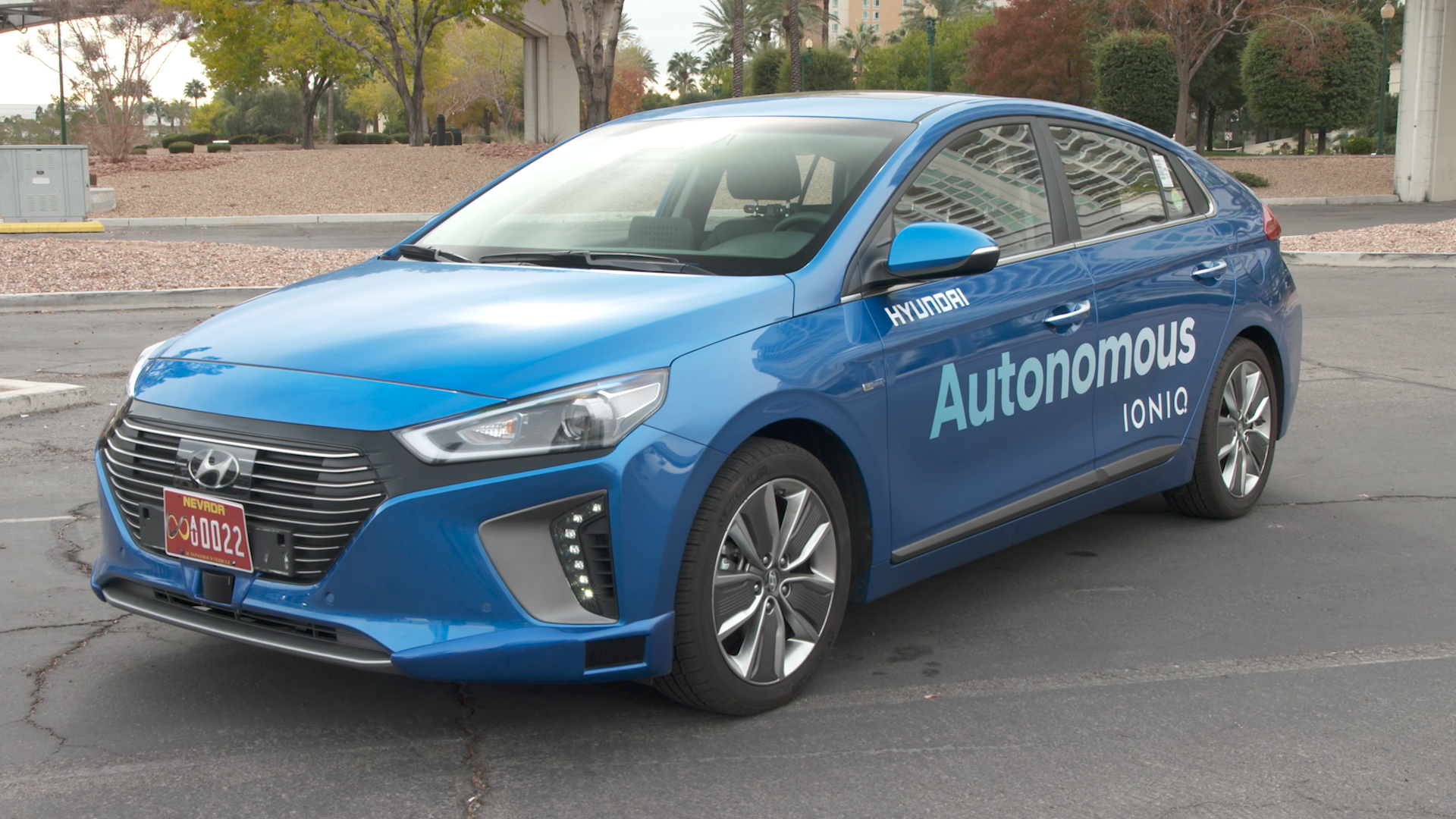
I've been testing a new car, but I never actually drove it. That's because it drives itself.
It's the shape of things to come: autonomous vehicles rolling along without human drivers. Hyundai is the latest automaker to take the wraps off of its self-driving technology. For Hyundai, this comes in the form of research versions of the company's new Ioniq.
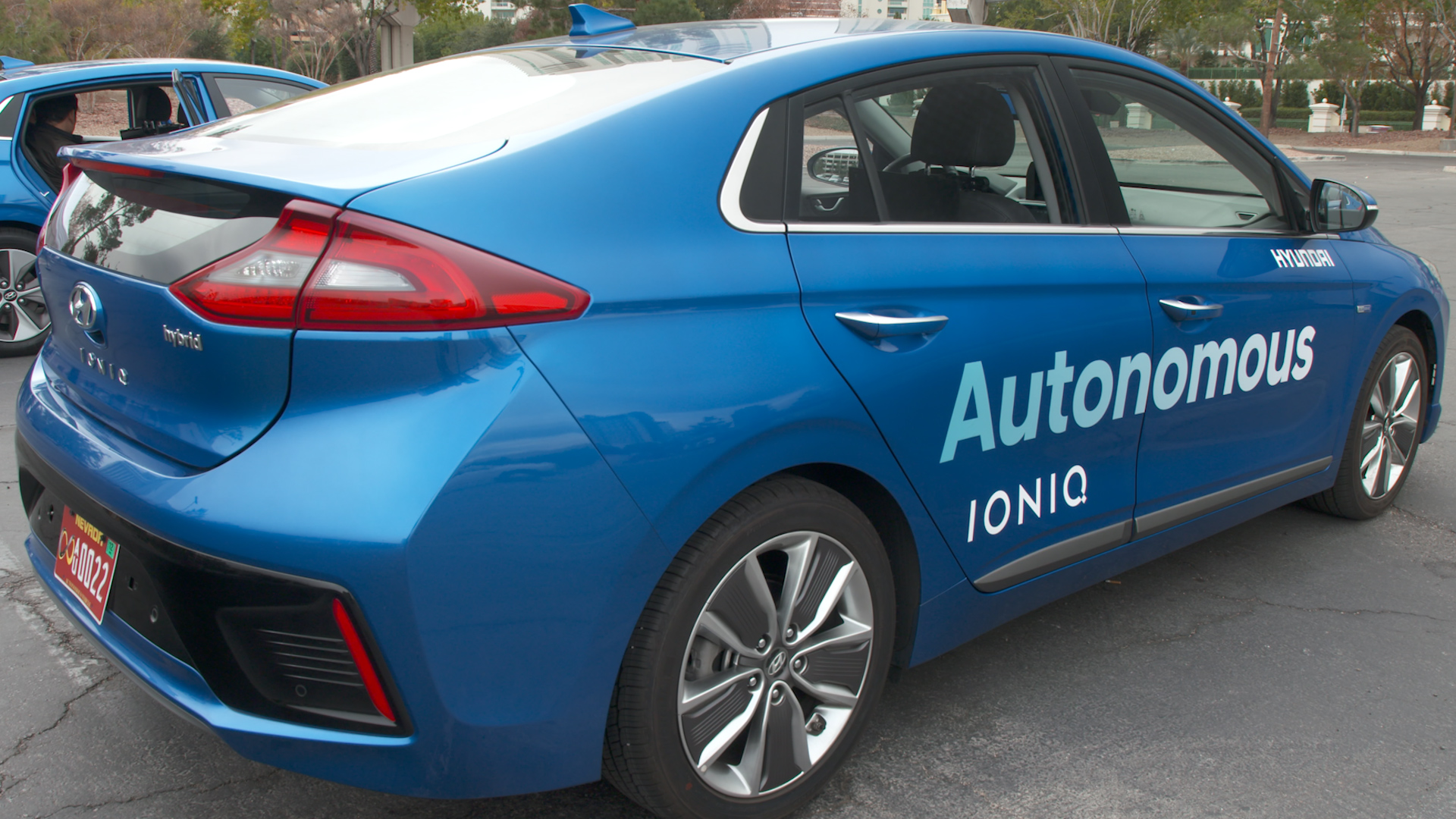
I rode along with an engineer from Hyundai, recording the journey as we traversed the streets of Las Vegas. The test vehicles, with large "Autonomous" decals emblazoned on the sides, were two Ioniq compact cars, an EV (or electric vehicle) model and a hybrid version. Both will appear early next year in nonautonomous form. A plug-in hybrid version will follow later in the year.
When Can You Get It?
Hyundai says that its autonomous vehicle technology could appear as soon as competing systems already announced from the likes of Ford and GM, who are aiming for the 2020 or 2021 time frame. But the company says it wants the car to be affordable. "It can't be a $20,000 option," said Mark Dipko, director of corporate planning at Hyundai Motor America.
MORE: Connected Cars: A Guide to New Vehicle Technology
A Sleeker Self-Driving Car
What's unique about Hyundai's self-driving test vehicles is that aside from the special badging, they look like ordinary cars. By contrast, the vehicles that Google and Uber are shepherding down roads have multiple protuberances and insect-like appendages stuck to their roofs. The Hyundai Ioniq hides all of its cameras and sensors, with no apparent reduction in their effectiveness.
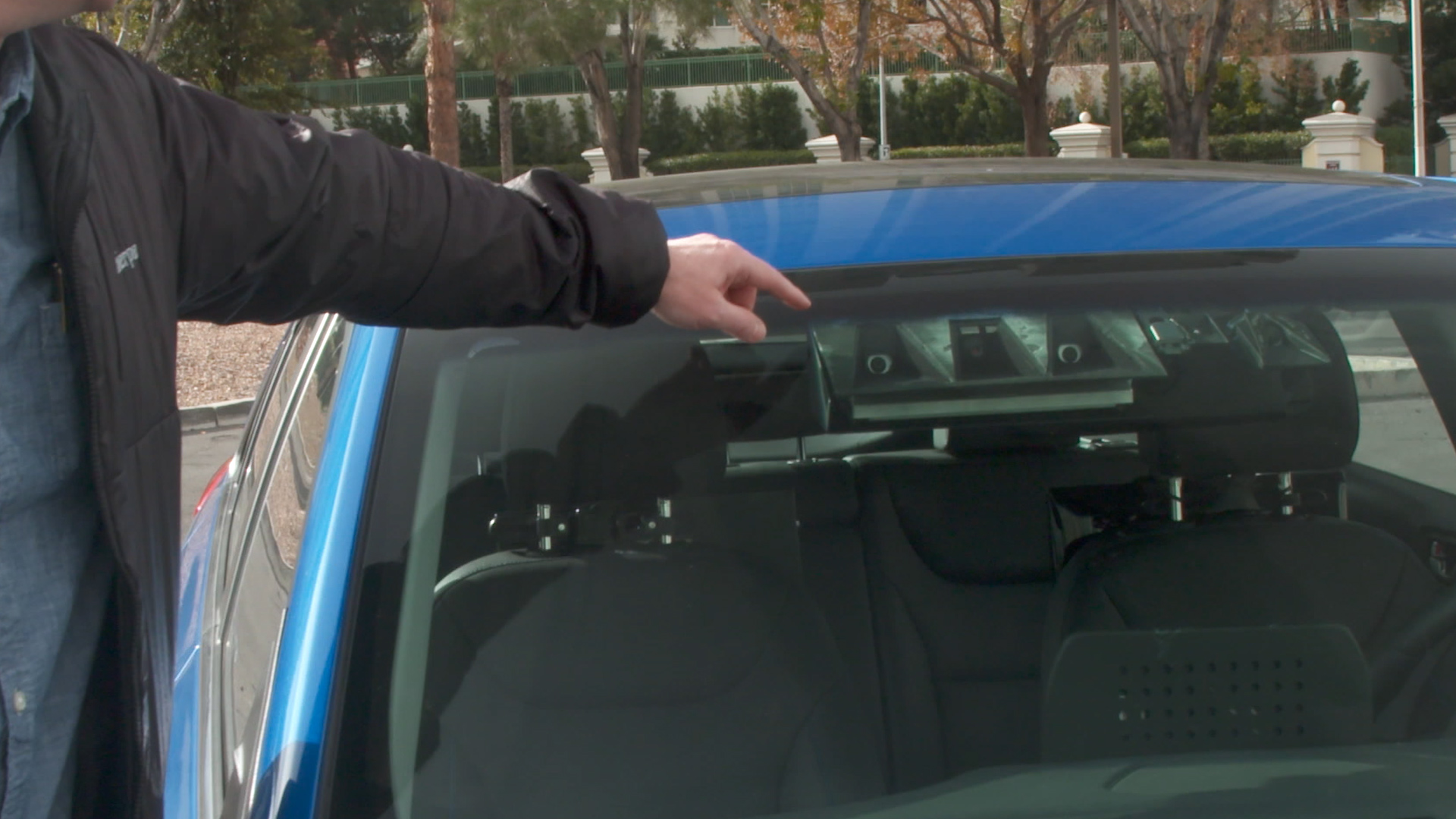
Next to the rearview mirror inside the car are four forward-facing video cameras. Two stereo cameras calculate distances and scan for objects and road signs. A single-lens camera looks for red, yellow and green traffic lights (the varying position and angle of traffic lights present a particular challenge). The fourth camera is a Mobileye and TRW system that identifies pedestrians, cars and animals in the car's path.
Sign up to get the BEST of Tom's Guide direct to your inbox.
Get instant access to breaking news, the hottest reviews, great deals and helpful tips.
Hyundai also uses three lidar (light detection and ranging) laser units, one in the center of the car's grill with two additional side-aiming lidar units hidden in the front left and right corners of the vehicle. Additional radar sensors cover side blind spots and the rear view.
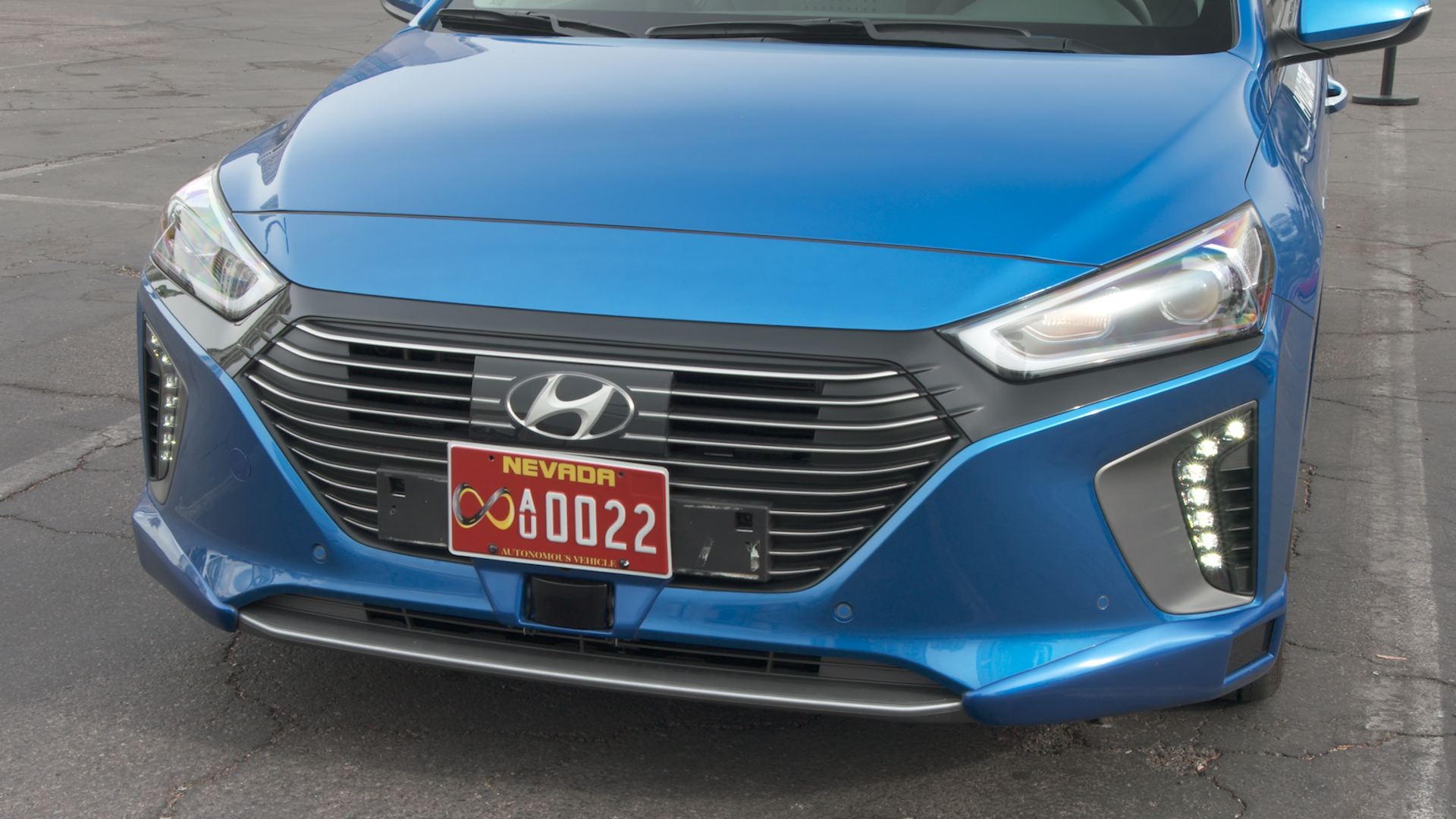
Hyundai is currently developing its own software to fuse all this sensor data together along with precision maps produced by another Hyundai subsidiary. All of this information is then used to direct the car's automated systems and steer it safely down the road. (The maps include additional data, such as the curvature of the road ahead and elevation information.)
Here We Go! Slowly...
To start our drive, the engineers input a route into the Ioniq's navigation system. The only hints that there was something different about the car were an emergency shutoff button (should something go wrong with the EV portion of the car) and a second screen protruding from the dash that displayed, in animated form, some of what the car was sensing ahead.
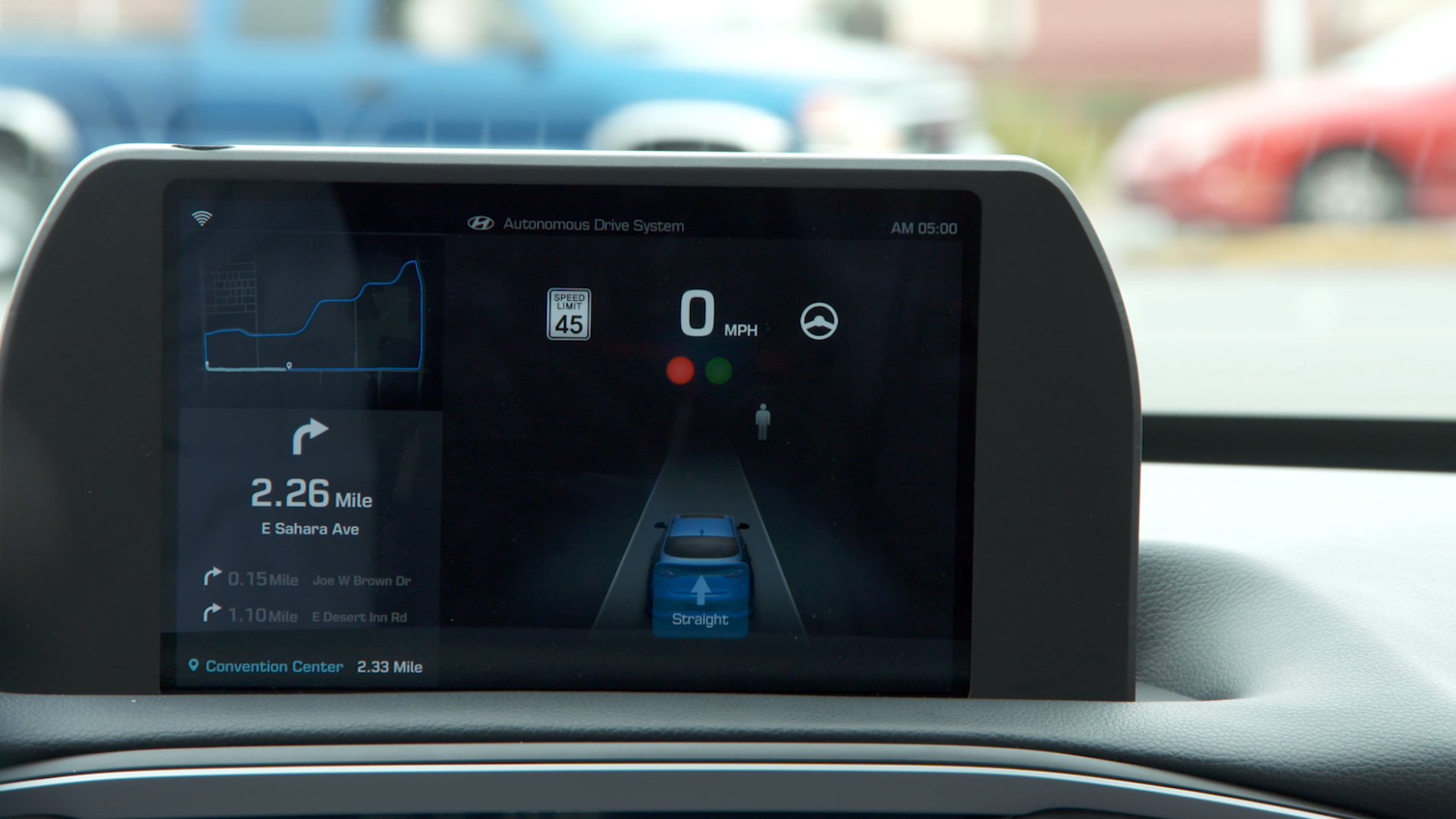
When we came upon a bus, for example, a bus icon appeared on the screen, as did symbols for cyclists, pedestrians and other cars on our drive. These are all for the benefit of drivers, er, passengers, to reassure them that the Ioniq does in fact see what's around it. (In the backseat for demonstration purposes, Hyundai also attached two screens to illustrate what the lidar and other sensors could see in real time.)
What one quickly learns is that the Ioniq autonomous concept car drives like a little old lady, which is to say, very cautiously.
What one quickly learns is that the Ioniq autonomous concept car — like other autonomous vehicles — drives like a little old lady, which is to say, very cautiously. The engineers explained to me that the four-door was not allowed to exceed the speed limit, for example, and the car's programming assumes the worst in most situations, such as that a pedestrian moving along a sidewalk might step out into the street at any moment.
MORE: Android Auto FAQ: Everything You Need to Know
The car, at least in this test version, was also programmed to stop about 9 feet short of major crosswalk markings, the better to detect the curbs on the left and right and ensure that errant pedestrians didn't get too close to the front bumper.
One Smooth Chauffeur
Once I became accustomed to the Ioniq's prudent driving habits, I found that it was a remarkably smooth chauffeur and adept at keeping within lane markings. There was no ping-ponging back and forth across the lane as the car followed several sinuous roads. It even managed to recognize the golf-ball-like markings of Las Vegas lanes, which can be particularly difficult for camera systems to detect (versus the more common painted white stripes).
Even in stretches where the markings had been scrubbed off, Hyundai's car maintained its lane and even steered clear of a bike lane (something I noticed other human drivers on the road seemed incapable of doing). The Ioniq also signaled for every turn (again, something human operators around us seemed unable to do).
When a woman stepped off the curb in front of us without looking, the Ioniq stopped smoothly, as if it had been watching her all along (it had been).
Better yet, the car recognized turning traffic in very busy Vegas intersections, avoiding other vehicles and turning right only when the way was clear. When a woman stepped off the curb in front of us without looking, the Ioniq stopped smoothly, as if it had been watching her all along (in fact, it had been). We stopped at red lights, obeyed traffic signs and had a (mostly) uneventful drive.
But autonomous cars still have a lot to learn.
Room for Improvement
Some overly cautious habits were irritating, such as strictly adhering to the speed limit on one empty stretch of road. And the self-driving Ioniq can take rule-following to extremes. At one point, it smoothly turned a corner and then sped up immediately to the maximum speed limit even though the light ahead of us had just turned red, making the sudden acceleration totally unnecessary.
At one intersection with a dedicated right-turn lane and pedestrian island to the left, we encountered our first situation that presented a quandary for the car. A man crossed in front us just as we began to turn right. The Ioniq stopped and the pedestrian made it safely to the concrete island to the left of us, but then the car stubbornly refused to go forward and finish the turn. The engineer explained that the man and some other pedestrians were still standing too close to the curb to our left, and out of an abundance of caution, the car would not go forward until they had moved farther away.

We waved at the gentleman to move further to the left. He waved back with a puzzled look on his face. And then the honking started from someone behind us in gargantuan pickup truck. As the honking became more strident, I suggested that the engineer take over and make the turn, which he did, but not before igniting a minor case of road rage. The pickup driver raced past us to the next stop light and angrily stared at us, apparently not understanding what the large "Autonomous" decal on the side of the car meant.
MORE: Apple CarPlay FAQ: Everything You Need to Know
The only other time during our Las Vegas test ride that the Hyundai engineer had to intervene was when we came upon a truck stopped in the right-hand lane. Our Ioniq began to slow down and was clearly going to stop. However, to the humans in our car, it was obvious the truck was not going to move forward any time soon (the driver had begun putting traffic cones behind his truck). So the Hyundai engineer tapped the turn signal, and the Ioniq made a quick lane change on its own to go around the truck.
Bottom Line
While the fundamental electromechanical systems already exist to create fully autonomous vehicles, Hyundai says there's still a lot of work to do in the industry to determine how such cars should behave. Software can't account for every situation and, as our test drive demonstrated, the mix of robotic and human-controlled vehicles can generate misunderstanding and frustration.
It reminded me of stories about when automobiles first appeared and had a tendency to break down on rutted dirt roads. A common cry from passersby was said to be, "Why don't you get a horse?!" In the future, some people may shout at tardy autonomous cars, "Why don't you get a real driver?!"
John R. Quain has been reviewing and testing video and audio equipment for more than 20 years. For Tom's Guide, he has reviewed televisions, HDTV antennas, electric bikes, electric cars, as well as other outdoor equipment. He is currently a contributor to The New York Times and the CBS News television program.

